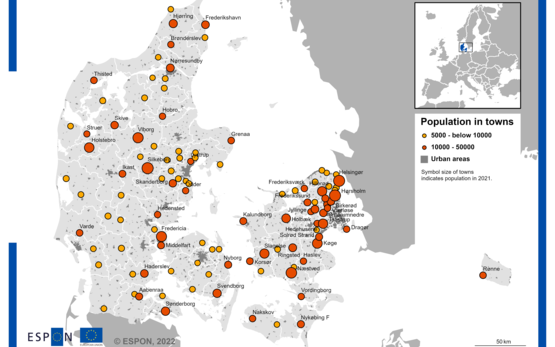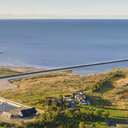Spotlight
-

Denmark, small and medium sized cities
Case Studies | August 25, 2022Looking for new activities and attractions to maintain vibrant town centres and develop appealing urban areas

Looking for new activities and attractions to maintain vibrant town centres and develop appealing urban areas

This report contributes to the Maritime Spatial Planning with two objectives: to undertake an analysis and characterization of the coastal and maritime planning and land-sea interactions from a mul

Article 174 of the TFEU states that: '’the Union shall aim at reducing disparities between the levels of development of the various regions and the backwardness of the least favoured regions.

This project, emanating from the targeted analysis project Maritime Spatial Planning and Land Sea Interactions (MSP-LSI) explores the potential spatial tensions between the deployment of renewable sources of blue energy (energy derived from our seas and oceans), with a particular focus on offshore wind energy, and other (potential) utilisations of the European seas.

This study analyses the implementation of an Integrated Territorial Investment (ITI) targeting small islands of the North Aegean Region in the 2014-2020 programming period, considering observed pat

Accessibility is an important aspect in the debate of regional development. It is used as an indicator to describe the territorial aspects of the transport system. Access to and from a region or city is considered an important aspect of the competitiveness of the location. During the last years efforts have been made to improve the accessibility of cities and regions in large parts of Europe. Many of these efforts have been related to improvements of the rail networks.

Balanced overall growth is considered a precondition for reasonable equilibrium in living conditions across the entire EU territory. The economic success of a region can be assessed in many ways. A measure that is most often used is Gross Domestic Product (GDP) both in absolute figures and as a rate of change, the latter being helpful to measure economic growth.

Europe’s mountain areas are in many ways of great importance as they comprehend a set of features to be considered as territorial potentials, in particular as water resource, they have an ecological, cultural and environmental diversity, which is an asset.

One of Europe’s features is its multitude and diversity of coastal areas. Today 35% of the European population lives close by the sea. Of all regions at Nuts 3 level, 29% are considered coastal regions. Traditionally, coastal areas specialised in fishery and trade resulting in the development of numerous harbour cities along the coast. Large metropolitan regions have then grown along the waterfront together with a large amount of small and medium sized cities. Nowadays harbour functions of coastal cities have developed into a dense network of maritime transport.

Thinking towards the future is an essential precondition for investigating where policies are necessary and how they should be shaped. Development has its own momentum, but policies can make a difference.

ESPON provides a number of publications bringing together the results from the various ESPON projects and providing synthesises on specific issues.

The ESPON poster tries to attract people’s attentions with some carefully selected maps and words allowing a quick first understanding what ESPON is about.

In the ESPON Briefing 2 a variety of current European trends are analysed in order to come to a better understanding a number of factors which need to be taken into account in relation to the Lisbon Strategy. The territorial diversity of factors like the global economy, regional imbalances, service sector specialisation, transportation, governance, demography and cultural innovation are presented so as to support a diversified assessment of the current situation.

Until the Seminar in Nijmegen, every ESPON seminar was followed by a "guidance paper" elaborated by the coordinating projects: ESPON 3.1 and ESPON 3.2.

The ESPON Synthesis Report I is a tool for the ongoing debate of issues related to the structure, cohesion and development of the European territory. The purpose of the report is to communicate the progress made within ESPON after the first year of activities.

The purpose of this second ESPON Scientific Report is to document the progress made on building a scientific platform for applied European territorial research.

The ESPON Synthesis Report III is based on all 34 ESPON projects of the ESPON 2006 Programme. The purpose is to communicate the main findings of the ESPON 2006 Programme, and to nourish policy development for different territories in Europe through dialogue among policy makers, practitioners and researchers.